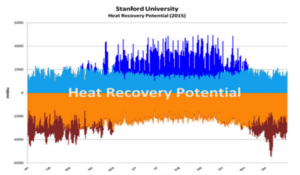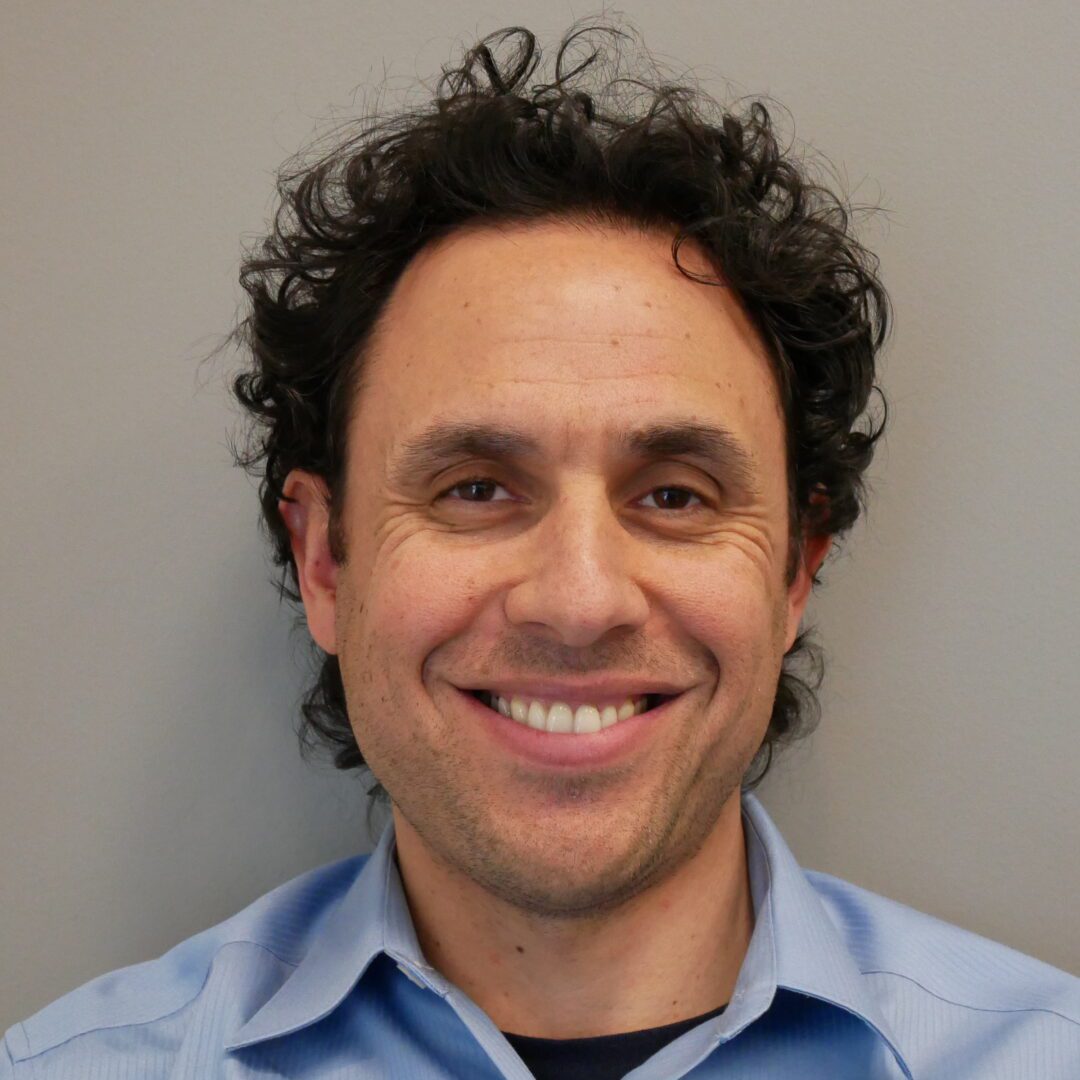
No heat molecule left behind: Stanford’s district-level heat recovery system
What if you could take the wasted heat from a building and reuse it in another where more heat is needed? This is happening now at Stanford University.
What if you could take the wasted heat from a building and reuse it in another where more heat is needed? This is happening now at Stanford University. Heat Recovery Chillers (also known as heat pumps) transfer waste heat to a hot water tank in the university’s Central Energy Facility, then circulate it throughout the campus as part of the Stanford Energy System Innovations (SESI) project.
In addition to three heat pumps, the Central Energy Facility contains two five-million-gallon cold water tanks, and a two-million-gallon hot water tank, all involved in an innovative heat transfer process. Using these components, recovered heat is distributed as hot water through 22 miles of hot water piping. This district-level heat recovery system serves 155 buildings around Stanford’s campus.

The SESI project capitalizes on new technology that Stanford developed to efficiently recover waste heat and transfer it to where it is needed. The technology used takes advantage of the fact that large buildings are often heated and cooled simultaneously.
In the graph below, the dark blue area shows the days that are predominantly cooling degree days, and the dark red area shows the heating degree days. “Degree days” are a standard measure for heating and cooling. The light blue and orange areas depict the times when both heating and cooling happen. Given the overlap, it makes sense to recover waste heat from one area and transfer it to another area.

The Stanford district-level heat recovery system provides 90% of total campus heating needs. Stanford’s Land, Buildings & Real Estate department produced a video illustrating how the system works:
The SESI project, which costs $485 million, benefits the university in many ways, including:
- Overall operating cost reductions
- Freed-up open space on campus, due to the removal of the old Combined Heat & Power plant
- Noise pollution reduction
- Improved overall safety
- Significant potable water use reduction on campus
- Reduction of greenhouse gas emissions by 150,000 tons per year
With this project and others, Stanford has been steadily chipping away at its fossil fuel use. Between the 4.5 megawatts (MW) of solar photovoltaics onsite and 69 MW-DC of solar generation offsite – which provide just over 50% of the campus’s total electricity use – and the SESI district-level heat recovery system, Stanford’s greenhouse gas emissions are now 68% below its peak emissions level in 2011. And more greenhouse gas reduction projects are in the planning phase.
The Peninsula Advanced Energy Community (PAEC) initiative’s partners and collaborators are proud to have Stanford University as a project partner in working to highlight innovative projects that are replicable and scalable at the state and national level. While the SESI project may seem cost-prohibitive at nearly half a billion dollars, at its heart is a simple technology: a heat pump that transfers heat from one medium to another. As such, this project could be replicated at a smaller scale to build out clean local energy communities in other areas.
The Peninsula Advanced Energy Community (PAEC) is a groundbreaking initiative to streamline policies and showcase projects that facilitate local renewables and other advanced energy solutions like energy efficiency, energy storage, and electric vehicle charging infrastructure. The PAEC will create pathways to cost-effective clean local energy and community resilience throughout San Mateo County, the City of Palo Alto, and beyond. The PAEC is a collaboration between the Clean Coalition, the California Energy Commission, Pacific Gas and Electric, and an array of municipalities, emergency response jurisdictions, schools and universities, and corporate entities. For more information, please visitwww.clean-coalition.org/PAEC.
Graphics above:SESI Project, Stanford University

